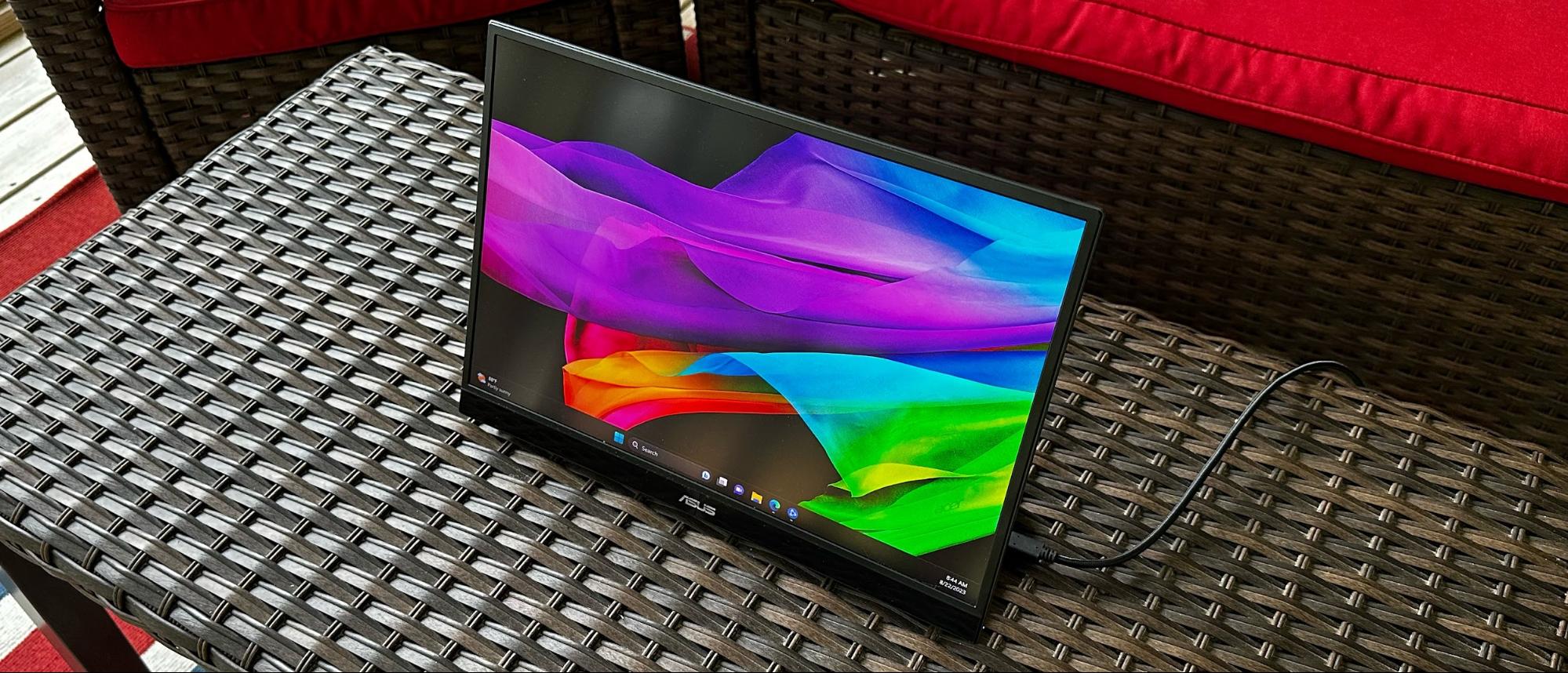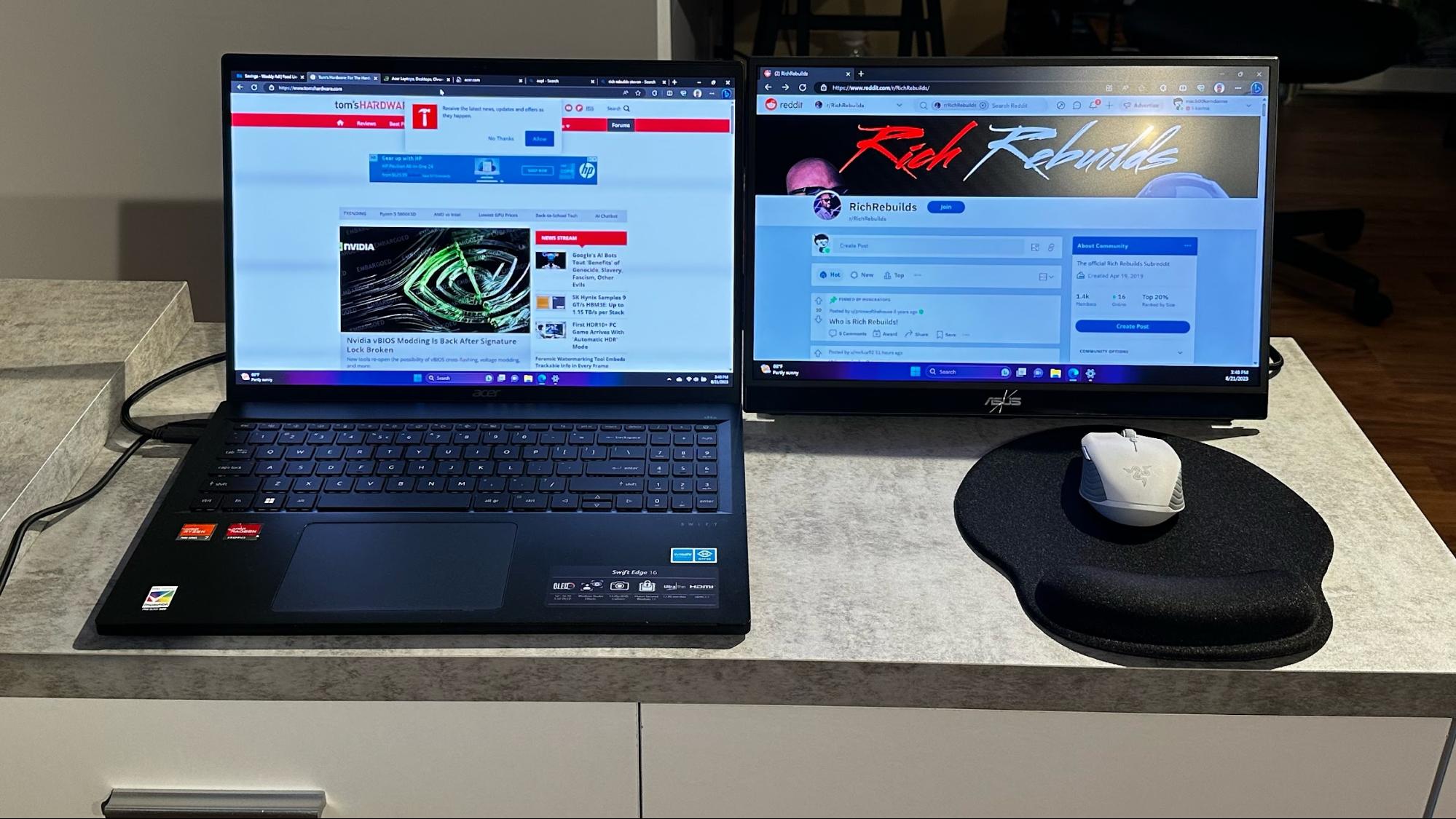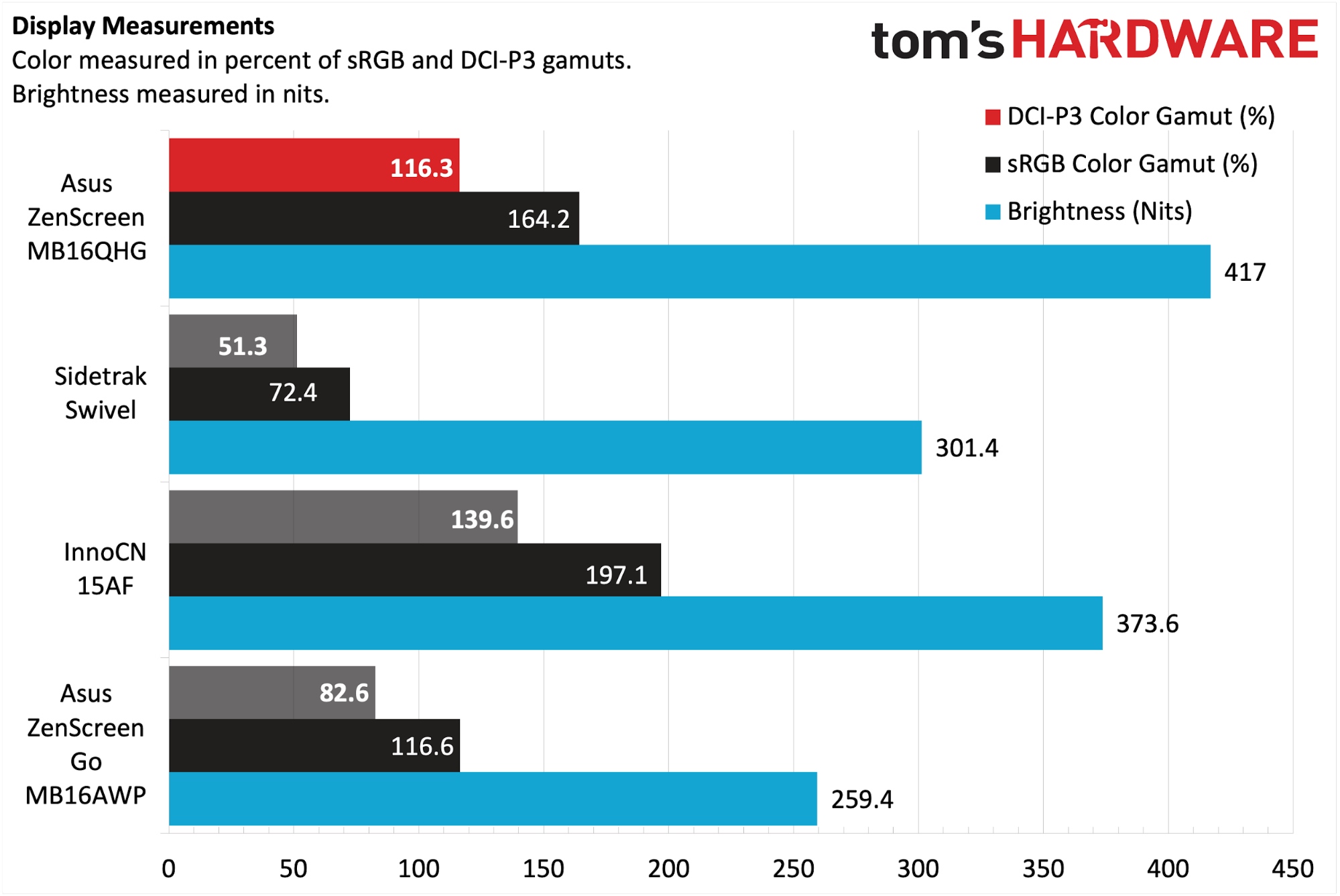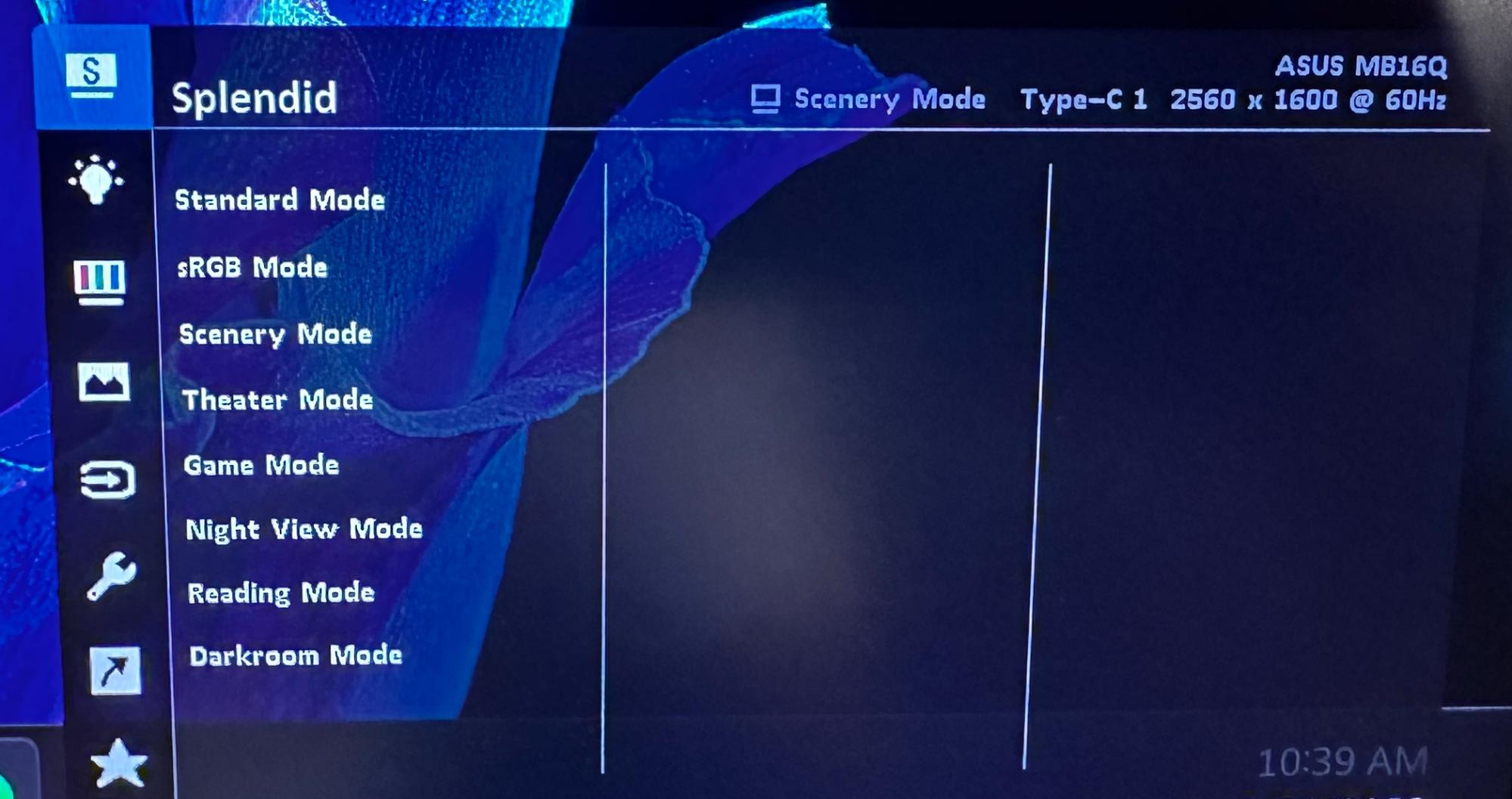Tom's Hardware Verdict
The ZenScreen MB16QHG splits the difference between 1080p and 4K portable monitors, and does so with a colorful, 120Hz panel.
Pros
- +
120Hz refresh rate
- +
Solid hinge design
- +
Vibrant colors
Cons
- -
Pricey
- -
Lacks Adaptive-Sync for gamers
Why you can trust Tom's Hardware
16-inch laptops are all the rage in the Windows realm, so it’s not shocking to see that size class invade the portable monitor space. Asus is throwing its weight behind 16-inch monitors with the new ZenScreen MB16QHG, priced at $399.
The ZenScreen MB16QHG features a 2560 x 1600 resolution (16:10) IPS panel and doubles the refresh rate of typical portable monitors to 120Hz. Throw in good color performance, a robust stand and one of the brightest panels we’ve seen for a portable monitor, and the MB16QHG has a lot going for it. However, is it impressive enough to be classified as one of the best portable monitors? Let’s dive in.
Asus ZenScreen MB16QHG Specifications
| Panel Type / Backlight | IPS / WLED |
| Screen Size / Aspect Ratio | 16 inches / 16:10 |
| Max Resolution & Refresh Rate | 2560 x 1600 @ 120Hz |
| Color Depth | 8-bit |
| Max Brightness | 500 nits |
| Response Time | 5ms |
| Contrast | 1,200:1 |
| Ports | 1x HDMI, 2x DisplayPort (USB-C Alt Mode), 3.5 mm headphone jack |
| Speakers | None |
| Dimensions | 14.16 x 9.72 x 0.27-0.81 inches |
| Weight | 2.64 pounds |
Design of the Asus ZenScreen MB16QHG
The ZenScreen MB16QHG is on the larger side for a portable, although obviously smaller than the 23.8-inch ZenScreen MB249C. I could fit it inside a bag designed for a 15.4-inch laptop.
Like some other ZenScreen monitors, the MB16QHG featured a hinged base rather than a kickstand or detachable/magnetic stand. This makes the unit a bit heavier, but it is solid and provides easy access to the ports. I also like this design arrangement because the cables connect low-down at desktop level and behind the screen. This way, the cables are largely out of sight and out of mind when using the monitor. Some monitors position the ports along the right and left edges of the display panel, making them an eyesore.
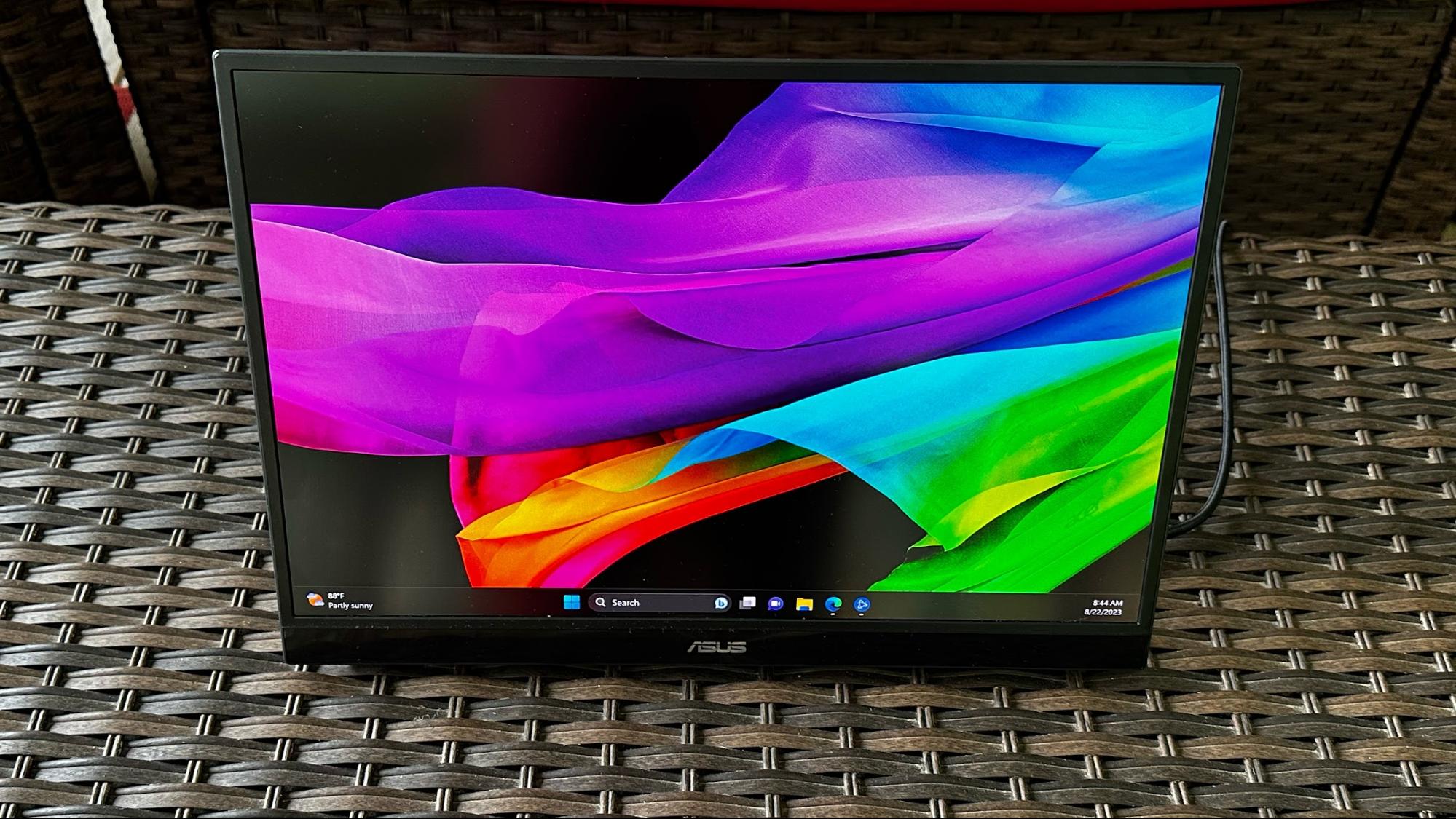
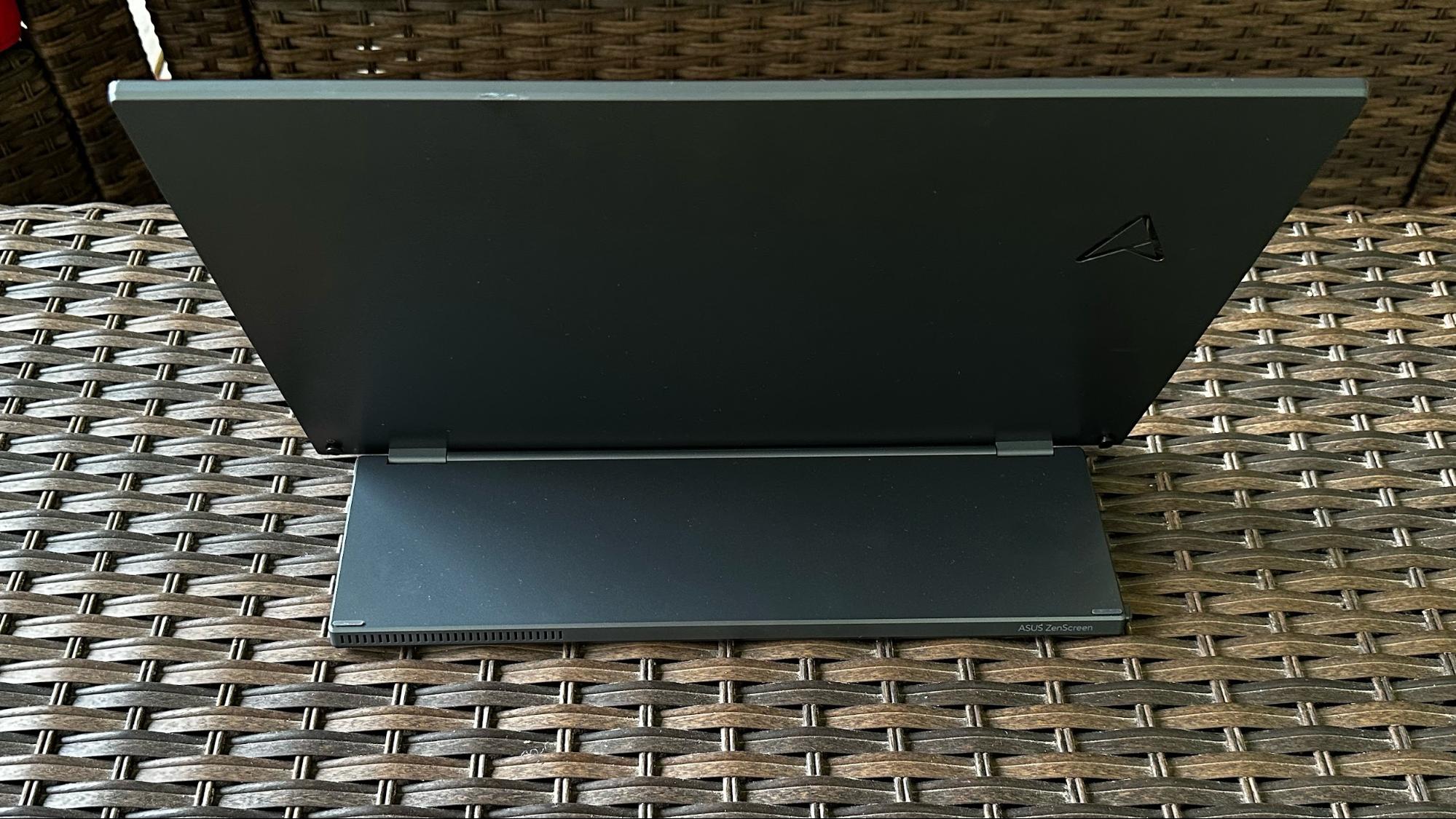
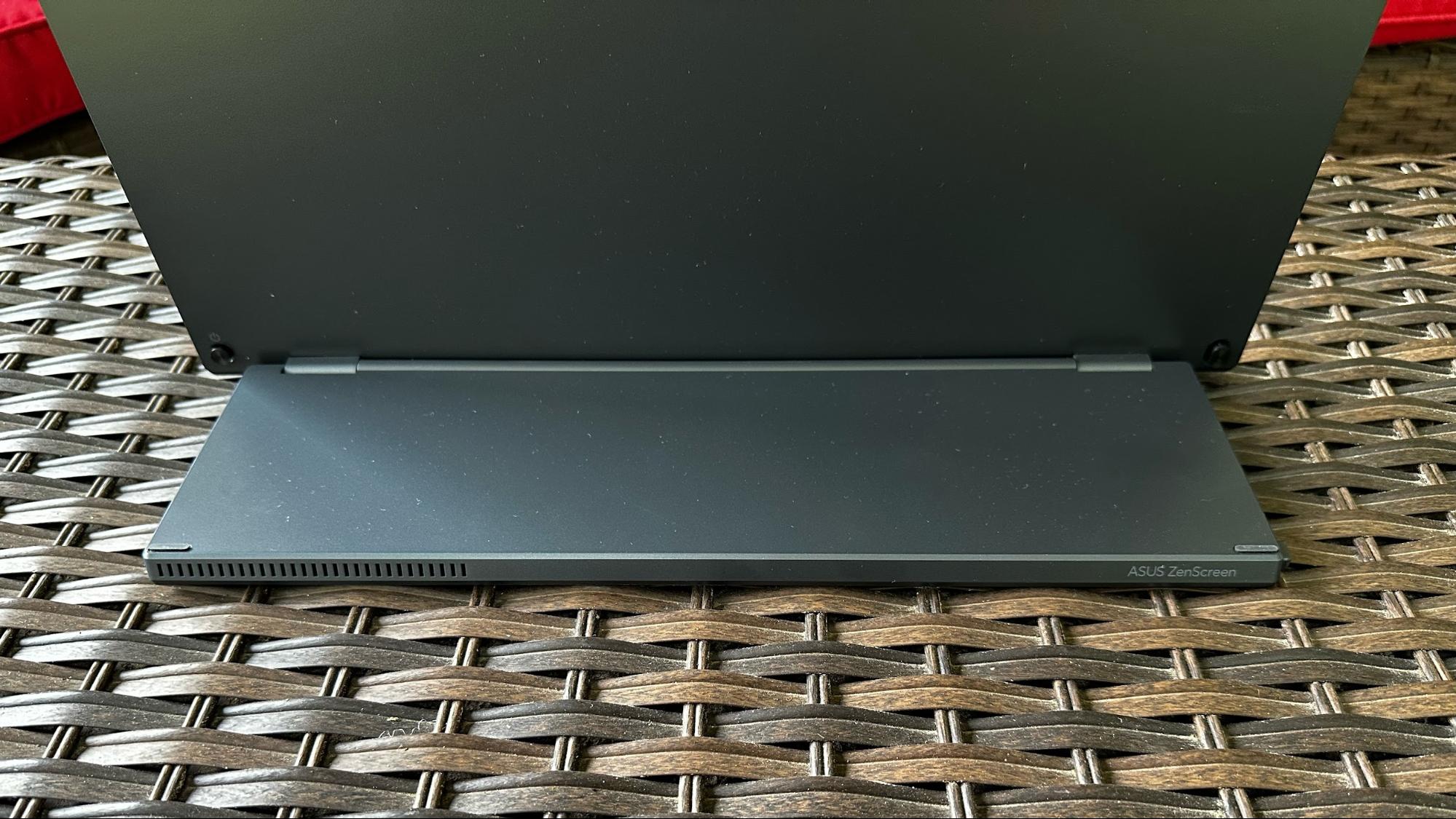
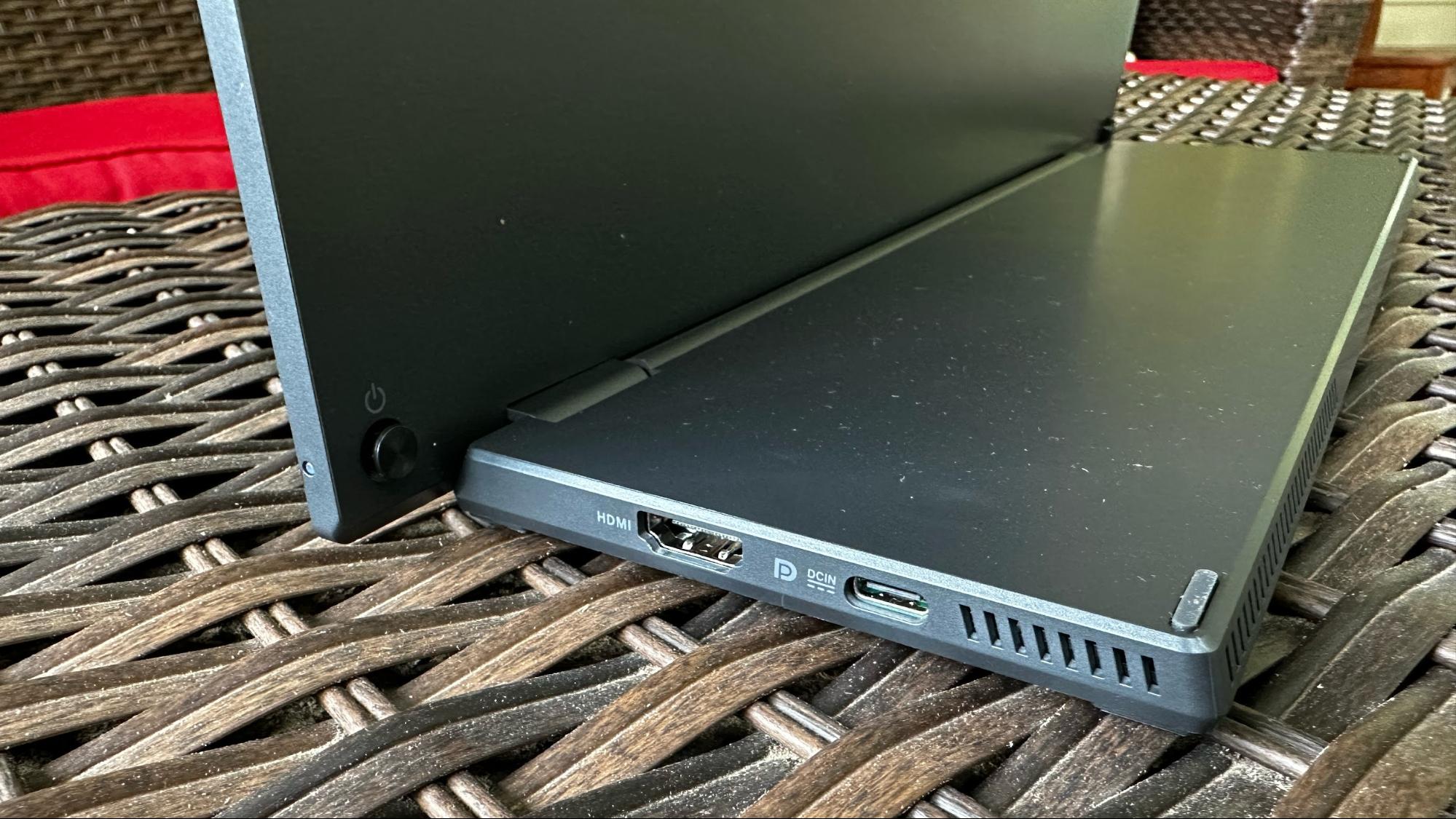
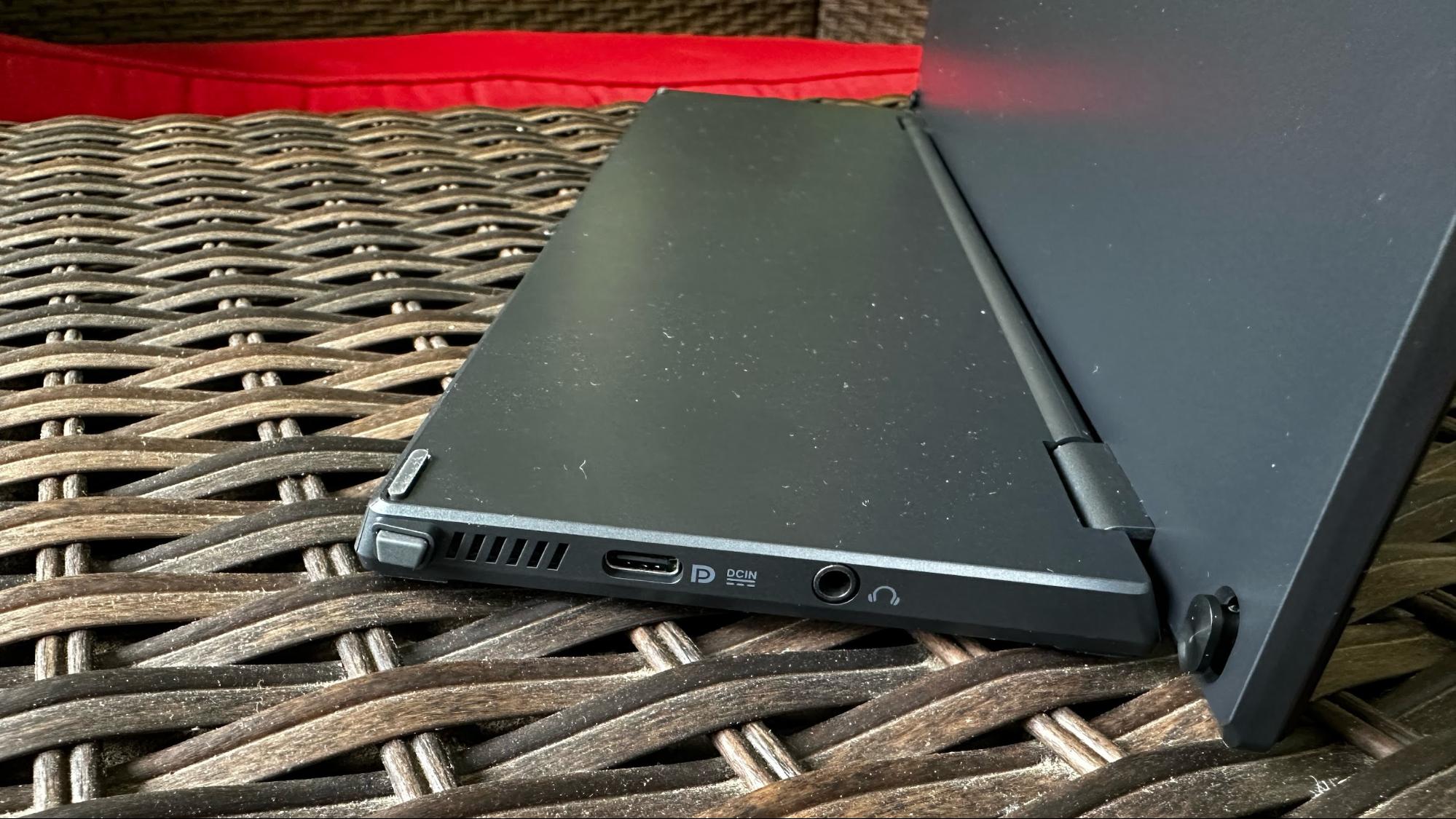
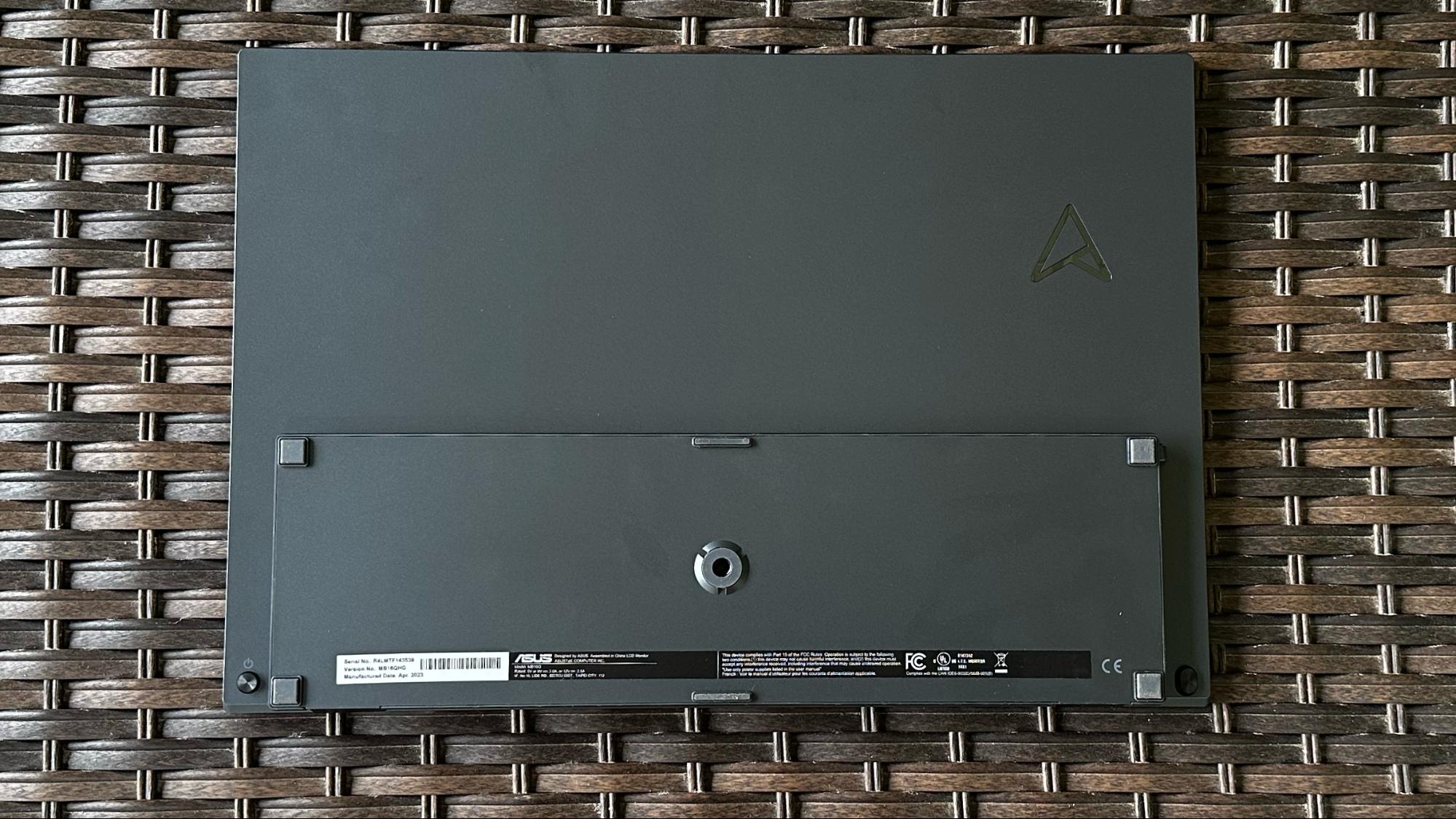
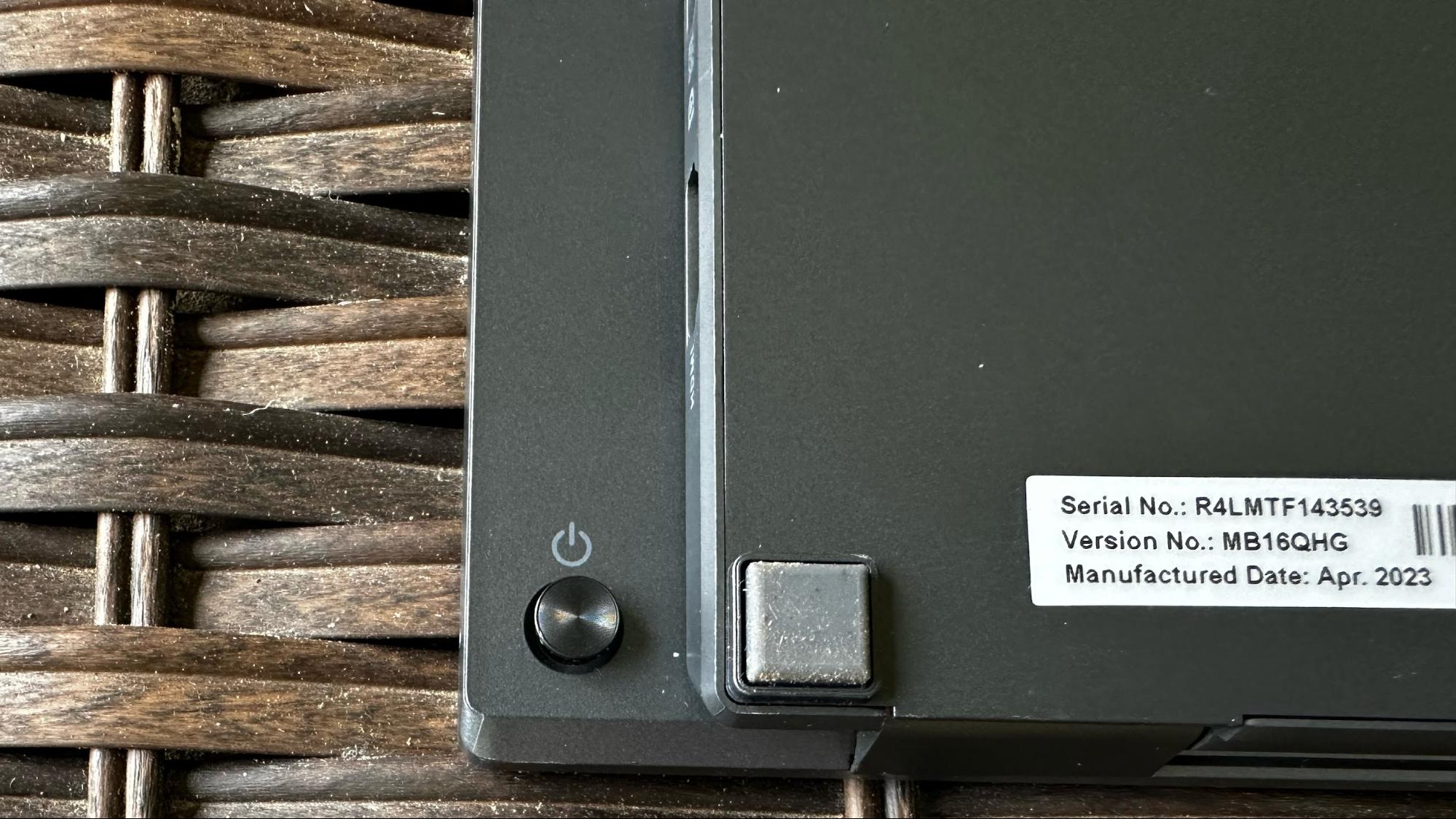
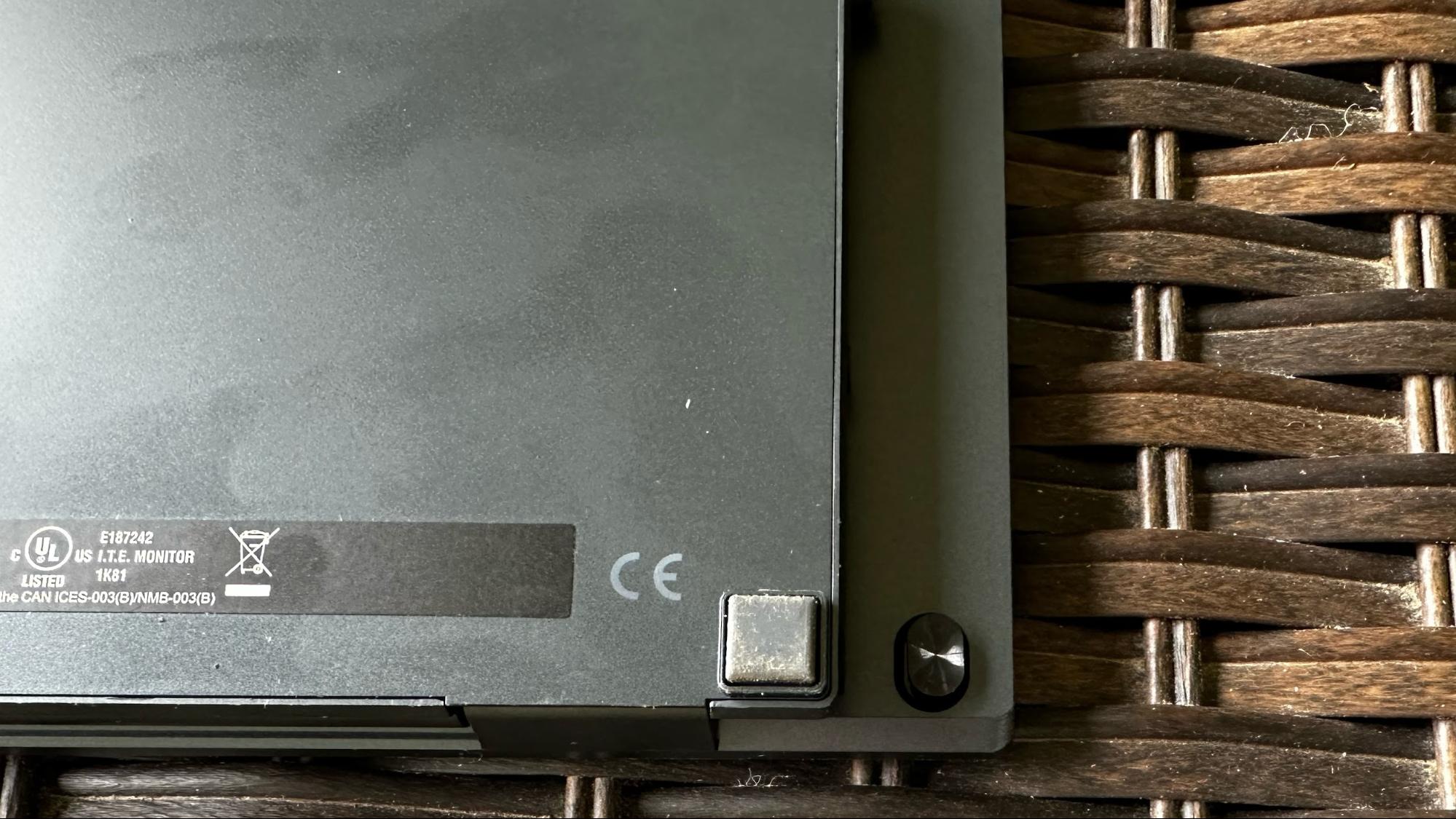
The hinge for the display allows it to sit completely vertical or lay down flat against the base (and any angle in between). However, do note that while reclining the display can be performed with one hand, the base is not heavy enough to do the same bringing the display back into the fully upright position. You will need to place one hand on top of the base and use your other hand to adjust the viewing angle. A tripod socket is also integrated into the bottom of the base, which can be used with standard tripods to suit your needs.
Speaking of the base, you’ll find a single full-size HDMI port and a full-function USB-C port on the right. The left side is home to a second USB-C port and a 3.5mm headphone jack. I used the included USB-C cable for my testing, as it’s a simple one-cable affair for power, video, and audio. In addition, the OSD joystick and a power button are located on the back of the monitor.
Build quality for the MB16QHG is very similar to other members of the ZenScreen family, meaning it is constructed primarily of plastic to keep costs in check and weight down. However, the plastic construction is not a detriment, as it doesn’t feel cheap, and the graining on the plastic feels premium. However, one oddity is the bottom bezel with an Asus logo in the center. Asus uses a circular milling pattern that cascades out from the logo. While the pattern is meant to bring some visual interest to the design, it reflected light into my eyes as I tried to use the monitor.
Get Tom's Hardware's best news and in-depth reviews, straight to your inbox.
Image Quality and Performance of the Asus ZenScreen MB16QHG
The MB16QHG uses a 16-inch IPS display with a resolution of 2560 x 1600 (WQXGA). 2560 x 1600 is becoming a more common resolution for laptop displays, so it’s not surprising that it would also find its way to portable monitors – after all, they’re using the same panels in most cases.
I used the MB16QHG in conjunction with an Acer Swift Edge 16 laptop. It also features a 16-inch 2560 x 1600 panel, albeit using OLED technology. The two sit nicely beside each other, although the greater contrast of the OLED panel on the Swift Edge 16 was immediately noticeable. However, most folks will use the MB16QHG as a secondary screen; not their primary focus point.
To that end, I used the MB16QHG to add a few additional Microsoft Edge tabs, making it easier to scroll and research information as I wrote documents in Microsoft Word. I also used the monitor to edit Microsoft Excel spreadsheets and greatly appreciated the 2560 x 1600 resolution over similar panels with a 1920 x 1080 resolution.
It should also be noted that the MB16QHG rocks a 120Hz refresh rate, which is a nice upgrade from the run-of-the-mill 60Hz panels that we usually see in the portable monitor space. While 120Hz is nice in fast-paced games, I also appreciated it for more mundane tasks like fast-scrolling in Edge and Google Chrome. Text and images looked crisp while scrolling and lacked the typical hint of blur that usually accompanies scrolling with 60Hz monitors. Even though the MB16QHG boasts a 120Hz refresh rate, it is not Adaptive Sync compliant, meaning that there’s no AMD FreeSync or Nvidia G-Sync support.
The MB16QHG stood out in our brightness testing, delivering 417 nits compared to 373.6 nits for the second-place InnoCN 15AF. However, that performance was still well short of the 500 nits that Asus claims the MB16QHG can achieve. To achieve 100% brightness, plug the monitor in with the included wall adapter. Relying on a single USB-C cable to handle all the heavy lifting for power and video limits you to a maximum of 60 percent brightness.
Our instrumented testing also showed that the MB16QHG achieved 116.3 percent of the DCI-P3 color gamut and 163.2 percent of sRGB, which was excellent performance for an IPS panel. Only the InnoCN 15AF with its OLED panel delivered better results.
Panel uniformity was good, and I didn’t notice any backlight bleeding on the monitor.
I used the MB16QHG to watch The Incredibles 2, a favorite in the Hill household, while working on the Acer laptop. Colors looked excellent, and contrast was good in most situations. However, in some of the nighttime scenes, it was readily apparent that the MB16QHG is no match for OLED panels regarding black levels. What looked like true black on OLED panels looked more like a very dark grey on the MB16QHG.
On-Screen Display for the Asus ZenScreen MB16QHG
The MB16QHG’s on-screen display (OSD) is visually like other ZenScreen monitors. However, Asus has various methods with its monitors for navigating the OSD. While some ZenScreens use a row of buttons for navigation and executing commands, the MB16QHG uses a 5-way joystick.
Pressing on the joystick brings up the menu. You scroll up or down the available menus using the up/down buttons while pressing in on the center of the joystick serves as the action button. Moving the joystick right activates the next sub-menu, while moving it left acts as a "back" command.
The usual Asus OSD staples include picture modes, blue light filter, color settings, image settings, input select, system setup, menu shortcuts, and a user-customizable favorites menu. The model of the monitor, the current picture mode, resolution, current input and refresh rate are always present at the top of the OSD.
Bottom Line
The Asus ZenScreen MB16QHG is a good all-around portable monitor for those needing extra real estate at their desk or when travelling. The 2560 x 1600 resolution affords some extra vertical resolution over QHD panels, and the 16-inch screen size is the perfect match for the growing army of 16-inch laptops arriving in the marketplace.
Although our measured brightness levels came up short of the manufacturer’s claims, it still easily bettered the other monitors gathered in this test. Its color performance was also good, making it suitable for photographers in the field (that’s where the tripod mount comes in handy).
With a price tag of $399, the MB16QHG is by no means cheap. That’s the same price as the ZenScreen MQ16AH (15.6-inch, 1080p, OLED), and $100 more expensive than the ZenScreen MB14AHD (14-inch, 1080p, IPS). However, the MB16QHG offers a slightly bigger screen with a higher resolution. Things get a bit more dicey when you look at some lesser-known competition, like the InnoCN 15A1F, which gives you a punchy 15.6-inch 1080p OLED panel for $169. Sure, you’re giving up quite a bit regarding resolution, but you could buy two 15A1F’s for the price of one MB16QHG and still have money left over.
However, if you’re looking for some additional resolution over 1080p and bumping up to 4K resolution in a portable form factor is overkill for needs, the MB16QHG is worth considering. We just wish it was priced more competitively in the fast-growing portable monitor segment.
MORE: Best Portable Monitors
MORE: Best Budget 4K Monitors
MORE: Best Computer Monitors

Brandon Hill is a senior editor at Tom's Hardware. He has written about PC and Mac tech since the late 1990s with bylines at AnandTech, DailyTech, and Hot Hardware. When he is not consuming copious amounts of tech news, he can be found enjoying the NC mountains or the beach with his wife and two sons.
-
Gfresh404 Is there any way you could start including the minimum brightness of the portable monitors you review? As a chronic migraineur, it would be immensely helpful.Reply
